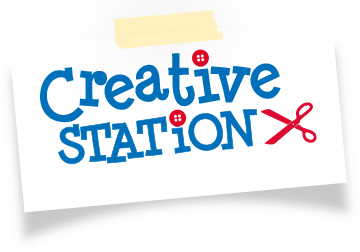
Origami Craft Techniques
Most people have heard of origami but have you ever wondered exactly what is and how it became so popular? At Baker Ross we love this beautiful art activity and decided to look into its history. Read on to learn the fascinating information we discovered.

What is Origami?
Quite literally origami is the art of paper folding to create beautiful two or three -dimensional sculptures or models from a flat sheet of paper. Whilst there is much debate as to the exact details and origins of origami, it is thought that its early history can be attributed to both China and Japan.
The minimum amount of time needed is about 12 hours but 24 is best especially for the first base layer as that will form the foundation for everything on top so you’ll want to be sure it is extra sturdy.
As paper was a rare and expensive commodity the art itself may have even related to thin cloth or leather at first. It was around 1880 that the name associated with this beautiful art form changed. Up until that time it had been known as Orikata meaning folded shapes. The word we all know today origami was derived from the Japanese words oru meaning to fold and kami meaning paper.
What was origami originally used for?
Early examples of origami crafts were used in religious ceremonies. However, its use was not common as it was such an expensive item and only available to the very wealthy. Over time origami butterflies started to be regularly used in Shinto weddings to represent the bride and groom. Akira Yoshizawa (1911 – 2005) is widely considered the grandmaster of origami. He devoted his whole life to it and is credited with helping to popularise the art making it available to everyone.

Swan, Crane and Owl Designs
Symbolism
In Japan origami is widely given as a gift to symbolise good luck. Knowing this makes it a lovely craft activity to do with children who can then give their origami crafts to a special friend or family relation. There are very specific folds and designs each with their own meaning such as the Crane in particular which is said to represent longevity due to the fact that these birds have very long lifespans.
Fun Fact
Did you know if you excel at origami you can be known as an origamist or origamian.
How to make Origami
There are many set designs and ways of folding but some of the simpler ones that only have 10-12 basic folds. Following the exact origami instructions is vital to get the best results and importantly identical results each time. Once you have mastered folds such as Valley, Mountain, Crease, Reverse etc you can go onto make simple designs such as Swan, Crane, Owl and so on. Please don’t let that put you off as our Baker Ross step-by-step origami instructions are very simple and easy to follow.

Inside Reverse Fold

Crease Pattern
What kind of paper do you use to do origami?
You could use any type of paper you want such as newspaper or tissue but they may not hold the shape for long. We find that a sheet of plain A4 works well, with enough to make a series of folds that will make the perfect sized model. Traditionally the paper was a square shape and you can always cut it to make a 20cm x 20 cm square. It can also be single or double sided with colour or a pattern.

Card and Paper

If you need some inspiration why not take a look at our origami craft ideas over at the Creative Station section of our website using the link below. There are so many fun ideas to choose from you’ll be spoilt for choice. Have fun and get folding!








